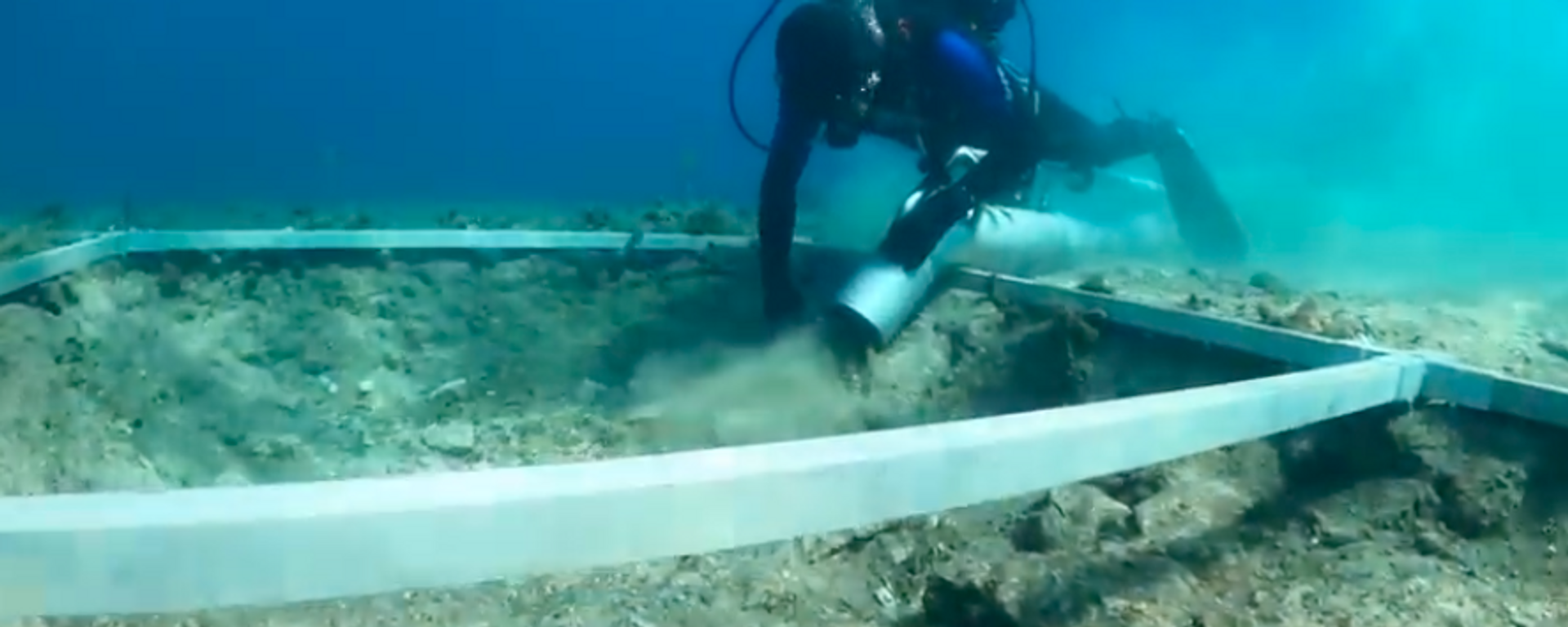https://sputniknews.in/20230728/600-million-year-old-ocean-unearthed-in-himalayas-by-indian-japanese-scientists-3262544.html
600-Million-Year-Old Ocean Unearthed In Himalayas by Indian, Japanese Scientists
600-Million-Year-Old Ocean Unearthed In Himalayas by Indian, Japanese Scientists
Sputnik India
The scientists conducted their research at the western Kumaon Himalayas from Amritpur to the Milam glacier, and Dehradun to the Gangotri glacier region, in India's Uttarakhand state.
2023-07-28T23:05+0530
2023-07-28T23:05+0530
2023-07-28T23:05+0530
science & tech
india
the himalayas
indian ocean
climate change
uttarakhand
melting glaciers
science diplomacy
japan
https://cdn1.img.sputniknews.in/img/07e7/02/0e/881813_0:161:3071:1888_1920x0_80_0_0_e7b08a9944f123e8c038b4c9ef81fdaf.jpg
In yet another scientific breakthrough, an ancient ocean of around 600 million years old has been discovered in the Himalayas during research by scientists from the Indian Institute of Science (IISc) and Niigata University, Japan.This new finding was made after scientists found droplets of water trapped in mineral deposits that were likely left behind from a paleo ocean.In the research published in the online journal 'Precambrian Research', the scientists revealed that the mineral deposits in the Himalayas dates back to the Snowball Earth glaciation period, which was a major glacial event in the history of the Earth when a thick ice field covered the entire planet for an extended period.Scientists hope that the analysis of the mineral deposits, which had both calcium and magnesium carbonates, might give them some insight into a possible explanation for the major oxygenation event that led to the appearance of dioxygen (O2) in the earth's atmosphere and the evolution of life.One of the scientists, Prakash Chandra Arya, a Ph.D student at the Centre for Earth Sciences (CEaS), IISc, told Indian media that the presence of marine rocks in the Himalayas holds the key to uncovering valuable insights about the Earth's ancient climate and ocean. These findings could prove immensely beneficial in the development of advanced climate models.
https://sputniknews.in/20230510/7000-year-old-ancient-road-discovered-in-adriatic-sea-1892627.html
india
the himalayas
indian ocean
uttarakhand
japan
Sputnik India
feedback.hindi@sputniknews.com
+74956456601
MIA „Rossiya Segodnya“
2023
Sangeeta Yadav
https://cdn1.img.sputniknews.in/img/07e6/0c/0f/110602_0:0:641:640_100x100_80_0_0_c298016a79eb02ef8caa9d1f688c12a5.jpg
Sangeeta Yadav
https://cdn1.img.sputniknews.in/img/07e6/0c/0f/110602_0:0:641:640_100x100_80_0_0_c298016a79eb02ef8caa9d1f688c12a5.jpg
News
en_IN
Sputnik India
feedback.hindi@sputniknews.com
+74956456601
MIA „Rossiya Segodnya“
Sputnik India
feedback.hindi@sputniknews.com
+74956456601
MIA „Rossiya Segodnya“
Sangeeta Yadav
https://cdn1.img.sputniknews.in/img/07e6/0c/0f/110602_0:0:641:640_100x100_80_0_0_c298016a79eb02ef8caa9d1f688c12a5.jpg
himalayas, scientists, climate change, new discovery, indian institute of science (iisc), niigata university, centre for earth sciences, prakash chandra arya
himalayas, scientists, climate change, new discovery, indian institute of science (iisc), niigata university, centre for earth sciences, prakash chandra arya
600-Million-Year-Old Ocean Unearthed In Himalayas by Indian, Japanese Scientists
The scientists conducted their research at the western Kumaon Himalayas from Amritpur to the Milam glacier, and Dehradun to the Gangotri glacier region, in India's Uttarakhand state.
In yet another
scientific breakthrough, an ancient ocean of around 600 million years old has been
discovered in
the Himalayas during research by
scientists from the Indian Institute of Science (IISc) and Niigata University,
Japan.
This new finding was made after scientists found droplets of water trapped in mineral deposits that were likely left behind from a paleo ocean.
In the research published in the online journal
'Precambrian Research', the
scientists revealed that the mineral deposits in the Himalayas dates back to the Snowball Earth glaciation period, which was a major glacial event in the history of the Earth when a thick ice field covered the entire planet for an extended period.
Scientists hope that the analysis of the
mineral deposits, which had both calcium and magnesium carbonates, might give them some insight into a possible explanation for the major oxygenation event that led to the appearance of dioxygen (O2) in the earth's atmosphere and the evolution of life.
One of the scientists, Prakash Chandra Arya, a Ph.D student at the Centre for Earth Sciences (CEaS), IISc, told Indian media that the presence of marine rocks in the Himalayas holds the key to uncovering valuable insights about the Earth's ancient climate and ocean.
These findings could prove immensely beneficial in the development of advanced climate models.



